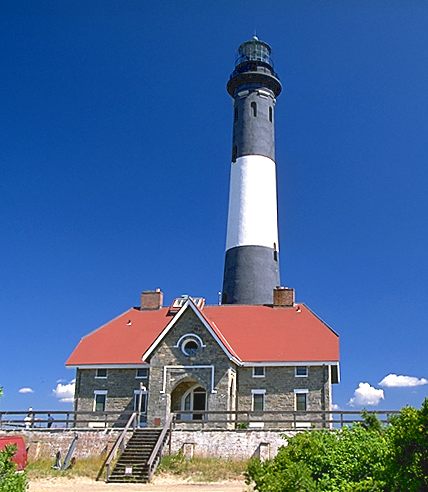
There are differing stories about why it's called "fire" island: it may derive from the poison ivy that comprises 70% of the vegetation and turns bright red in the fall; or from the fires burned by pirates and whalers centuries ago; or perhaps it's a mispronunciation of "five," as Fire Island is the fifth in a series.
An 89 foot stone tower was built here in 1827 and fitted with 14 oil lamps. In the 1850's the Lighthouse Board realized that the site was important enough to require a more powerful light, so the old tower was torn down and replaced with with the present 167 foot brick tower. A stone double keeper's dwelling was also built at theis time, with both the house and tower placed on a flagstone terrace.
The first-oder fresnel first shone in November of 1858 from the lantern of Fire Island Lighthouse. In 1912 the brick tower was encased in cement and painted with alternating black and white bands. These bands caused the cement to expand and contract at differing rates so that by the 1980's the tower was in terrible condition. The Fire Island Lighthouse Preservation Society raised funds for renovation and converted the dwelling into a museum.
Fire Island Light originally stood only 200 yards from the western edge of the island, but miles of beach have been added to the island during the past century, much like the "anti-erosion" at Assateague, Virginia.
The light can be reached from exit 53 of the Long Island Expressway, following signs to Robert Moses Park. Tours of the tower are conducted several times each week, but reservations are usually required to guarantee a spot. (516-661-4876)